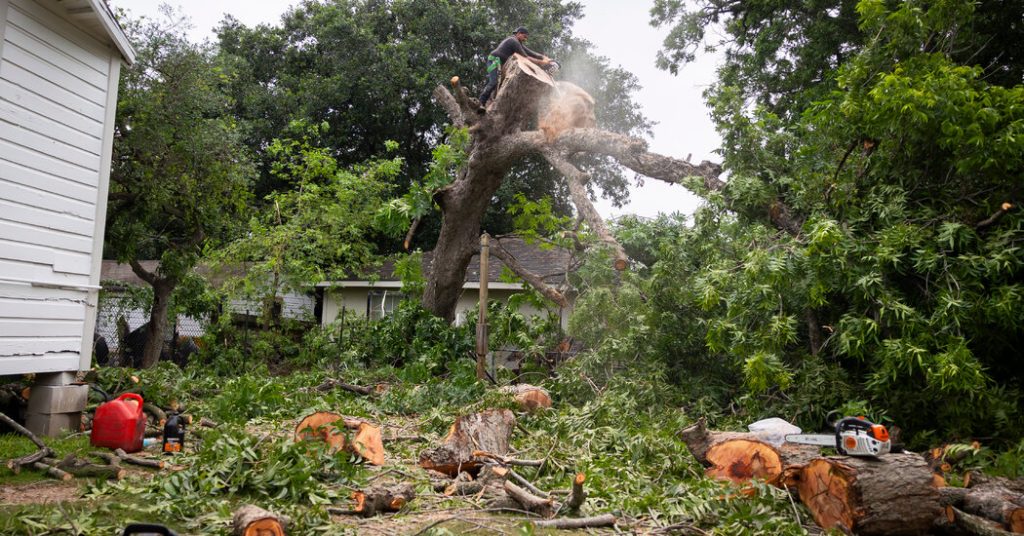A severe storm suddenly hit Houston late Thursday, catching many residents off guard as they went about their evening routines. The Astros continued playing baseball in their closed-dome stadium, while others were caught out biking or at the gym. By Friday, the city was littered with debris from winds up to 100 miles per hour, resulting in fallen trees, twisted stop signs, and damaged billboards. At least four people died, and around a million residents lost power on the Gulf Coast. Mayor John Whitmire and county official Lina Hidalgo held a joint news conference, putting aside their differences to address the emergency situation.
Residents recounted scenes of chaotic weather, with horizontal rain and debris swirling through the air. Many wondered if a tornado had passed through the area. Cleanup efforts began as Houstonians navigated life without power, relying on citronella candles, chainsaws, and assistance from neighbors. Gas stations with electricity and local shops offering comfort food saw long lines forming. As temperatures rose and the threat of groceries spoiling loomed, residents were faced with new challenges. One man, retired and on a fixed income, lamented the loss of his food as he watched neighbors come together to clear fallen trees from the roads.
The storm brought tragedy as a large tree fell onto a parked SUV, killing a woman inside. Family members mourned her death, placing flowers at the scene to create a makeshift memorial. Million-dollar homes were not spared, with many being damaged or narrowly escaping destruction by falling trees. In Woodland Heights, a large tree fell onto an old bungalow, narrowly missing a newly constructed and sold home. Cleanup efforts were underway, with workers using chainsaws and machetes to clear fallen trees and debris. Despite the destruction, resilience and a sense of community could be seen as neighbors helped each other navigate the aftermath of the storm.
The city’s post-disaster routine was familiar to residents, who had experienced previous calamities such as Hurricane Ike, Hurricane Harvey, and harsh winter freezes. Drivers became more courteous at unregulated intersections, and lines formed at gas stations and food shops that had power. As Houstonians adapted to life without electricity, concerns about food spoilage and impending high temperatures arose. Residents and volunteers worked together to clear debris and support those in need, exemplifying the spirit of resilience that is a hallmark of the city.
The unexpected storm left many Houstonians unprepared, contrasting with past disasters that allowed for more time to plan and brace for impact. For some, the level of destruction was unprecedented, with trees being uprooted and entire buildings being damaged. Despite the chaos, stories of kindness and community emerged, as strangers and neighbors came together to assist those in need. As the city worked to recover, the resilience of its residents shone through, highlighting the strength and solidarity of the community in the face of adversity.


